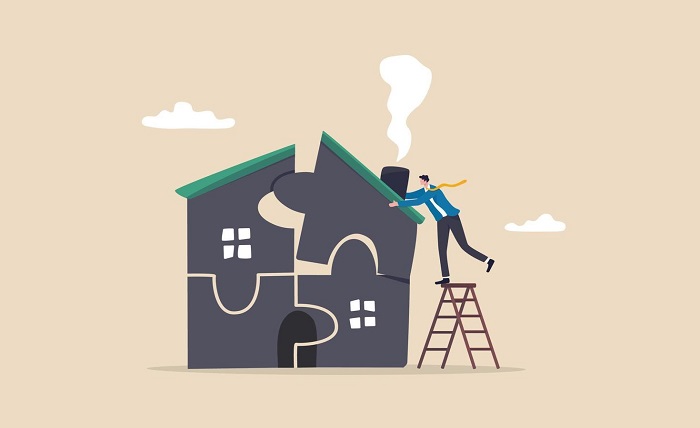Buying your first home is a milestone. When you’re just getting started, it can feel as daunting as trying to solve a massive puzzle without all the pieces. But fear not—this guide is your roadmap to understanding the home buying process, designed specifically for first-time buyers. By the end, you’ll have the confidence and knowledge needed to make informed decisions and find a place you can truly call home.
Understanding Your Financial Situation
Budgeting for a Down Payment and Monthly Mortgage
Before you start scrolling through real estate listings, it’s crucial to understand your budget. Your down payment is a significant upfront cost, typically ranging from 5% to 20% of the home’s price. Setting aside a specific amount each month can help you reach your goal without overwhelming your finances.
Once you’ve saved for a down payment, consider the monthly mortgage payment. Use online mortgage calculators to estimate how much you can afford. Remember, your mortgage is just one part of the financial equation—factor in property taxes, insurance, and maintenance costs.
Finally, create a budget that aligns with your current financial situation. Prioritize essential expenses and identify areas where you can cut back. This disciplined approach will help you manage your money effectively through the home-buying process.
Assessing Your Credit Score and Financial Health
Your credit score plays a vital role in determining the type of mortgage you qualify for and the interest rate you’ll pay. Lenders view your credit score as a reflection of your financial responsibility. A higher score generally means better loan terms.
Start by obtaining a free credit report from one of the major credit bureaus. Review it for accuracy and address any discrepancies. If your score needs improvement, focus on paying down existing debt, making timely payments, and avoiding new credit inquiries.
Keeping a close eye on your overall financial health is critical. Maintain a healthy debt-to-income ratio and build an emergency fund to cover unexpected expenses. With a solid financial foundation, you’ll be well-prepared for the mortgage approval process.
Mortgages 101
Types of Mortgages
When it comes to mortgages, one size does not fit all. The type of mortgage you choose should align with your financial goals and long-term plans. Let’s explore the most common options available.
Fixed-rate mortgages offer stability with a constant interest rate throughout the life of the loan. This predictability makes budgeting easier, but it may come with slightly higher initial rates compared to adjustable-rate mortgages.
Adjustable-rate mortgages (ARMs) begin with a lower interest rate, which can change periodically based on market conditions. While ARMs may save you money initially, they carry the risk of rising rates in the future.
FHA Home Loans, like those offered in Texas, are government-backed loans designed for low-to-moderate-income buyers. They require a smaller down payment and offer more flexible credit requirements, making them a popular choice for first-time buyers.
VA Loans are available to eligible veterans and active-duty service members. These loans often require no down payment and offer competitive interest rates, providing an excellent option for those who qualify.
How to Get Pre-Approved for a Mortgage
Mortgage pre-approval is a crucial step in the home-buying process. It demonstrates to sellers that you’re a serious buyer and provides a clear idea of your budget. Here’s how to get started:
- Gather Financial Information: Collect documents such as pay stubs, tax returns, and bank statements. Lenders use this information to evaluate your financial stability.
- Research Lenders: Compare different lenders to find one that offers favorable terms and aligns with your needs. Consider online reviews and recommendations from family or friends.
- Submit an Application: Complete the lender’s application, providing accurate and honest information. The lender will review your financial situation and credit score.
- Receive Pre-Approval: If approved, you’ll receive a pre-approval letter that outlines the loan amount you’re qualified for. Use this as a guide to narrow down your home search within your budget.
The Home Search
Determining Your Needs vs. Wants
With a mortgage pre-approval in hand, it’s time to think about what you’re looking for in a home. Creating a list of needs and wants will help you stay focused during your search.
Needs are non-negotiable features that a home must have to meet your lifestyle requirements. These may include the number of bedrooms, proximity to work or school, and safety features.
Wants are desirable features that enhance your living experience but aren’t essential. These could be a gourmet kitchen, a backyard pool, or a spacious garage.
Prioritize your list by identifying must-have features over nice-to-have ones. This will help you make informed decisions and avoid getting sidetracked by properties that don’t align with your true goals.
Tips for Finding the Right Neighborhood
Choosing the right neighborhood is just as important as finding the right home. The surrounding area influences your quality of life and future property value. Here are tips for making an informed choice:
- Research Online: Utilize online resources to explore neighborhoods, including local amenities, crime rates, and school ratings.
- Visit the Area: Spend time in potential neighborhoods to get a feel for the community vibe. Walk around, visit local shops, and talk to residents to gauge whether it suits your lifestyle.
- Consider Commute and Accessibility: Assess the proximity to work, public transportation, and major highways. An easy commute can significantly improve your daily routine.
- Look Beyond the Present: Investigate any planned developments or infrastructure projects that may impact the neighborhood in the future. A growing community can be an excellent investment opportunity.
Making an Offer and Closing the Deal
Understanding the Home Buying Process
Once you’ve found your dream home, it’s time to make an offer. Understanding the home-buying process will help you navigate this stage with ease.
- Make an Offer: Work with your real estate agent to determine a fair offer based on the property’s market value. Be prepared to negotiate if the seller counters.
- Earnest Money Deposit: This is a good faith deposit that shows you’re serious about purchasing the home. It’s usually held in escrow and applied to your down payment at closing.
- Acceptance and Contingencies: If the seller accepts your offer, you’ll enter into a contract. Common contingencies include financing approval, home inspection, and appraisal.
- Finalizing the Loan: Your lender will verify your financial information and conduct an appraisal to finalize your mortgage. Be responsive to any requests for additional documentation.
Negotiating the Offer and Dealing with Contingencies
Negotiation is often part of the home-buying process. Being prepared to handle contingencies will help you secure a favorable deal.
- Price Negotiation: If the seller receives multiple offers, you may need to negotiate the price. Work with your agent to present a competitive offer while staying within your budget.
- Inspection Contingency: A home inspection reveals potential issues with the property. If defects are discovered, you can request repairs, a price reduction, or terminate the contract.
- Appraisal Contingency: If the appraisal comes in lower than the purchase price, you’ll need to renegotiate with the seller. Options include lowering the price or covering the difference in cash.
The Importance of a Home Inspection
A home inspection is a vital step in the home-buying process. It provides peace of mind by identifying potential issues with the property.
- Hire a Qualified Inspector: Choose a certified home inspector with a solid reputation. Check online reviews and ask for recommendations from friends or family.
- Attend the Inspection: Being present during the inspection allows you to ask questions and gain a deeper understanding of the home’s condition.
- Review the Report: The inspector will provide a detailed report of their findings. Use this information to address concerns with the seller and plan for future maintenance.
Moving In
Budgeting for Moving Costs
Moving to your new home involves additional expenses beyond the purchase price. Planning for these costs will ensure a smooth transition.
- Hire Professional Movers: Consider hiring a reputable moving company to handle the heavy lifting. Obtain quotes from multiple companies and factor in hidden fees.
- DIY Moving: If you choose to move yourself, budget for truck rental, packing supplies, and fuel costs. Enlist the help of friends or family to save money on labor.
- Plan for Unexpected Expenses: Set aside funds for unexpected expenses, such as utility deposits, cleaning services, or minor repairs.
Tips for a Smooth-Moving Process
Moving can be a stressful experience, but careful planning can ease the process and make it more enjoyable.
- Declutter Before Packing: Reduce the number of items to move by decluttering. Donate, sell, or discard items you no longer need to lighten your load.
- Create a Packing Plan: Pack room by room, labeling each box with its contents and destination in your new home. This organization will simplify unpacking.
- Notify Important Parties: Update your address with banks, utility companies, and subscription services. Schedule the transfer or installation of essential utilities before moving day.
- Set Up Essentials First: Unpack essential items like toiletries, bedding, and kitchenware first. This will allow you to settle in comfortably without feeling overwhelmed.
Conclusion
Buying your first home is a rewarding journey that demands careful planning and informed decision-making. This guide provides essential knowledge to navigate the process, emphasizing the importance of assessing your finances, understanding mortgage types, and conducting a diligent home search. Effective negotiation and budgeting for moving costs are crucial for a smooth transition. Take the next step by seeking advice from real estate professionals or attending workshops to enhance your home-buying experience and move closer to owning your dream home.




